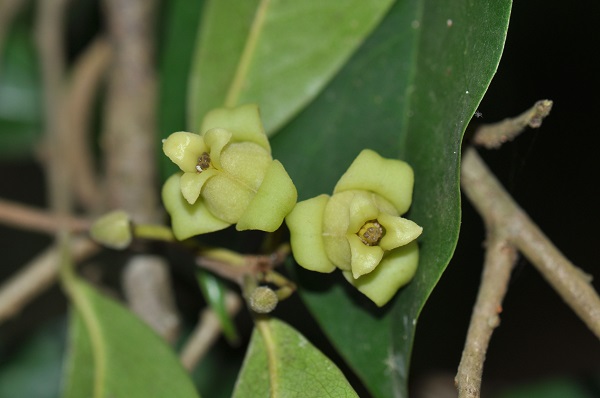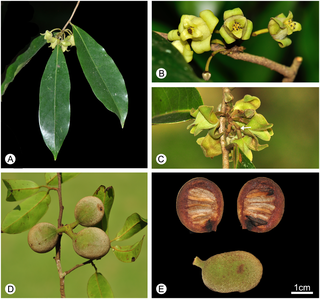The genus Alphonsea currently comprises 27 species of shrubs or trees, distributed in wet tropical lowland forests across south and south-east Asia, from India to the Philippines. In a recent study, a new member has added to the genus Alphonsea .
In field surveys, researchers from Xishuangbanna Tropical Botanical Garden (XTBG) and South China Botanical Garden (SCBG) found two indigenous trees growing in XTBG and in a small forest patch near Man-zhang Reservoir in Meng-la County, Yunnan Province. After morphological comparison and phylogenetic analyses, the researchers regarded it as new and named it as Alphonsea glandulosa.
The two individual trees were easily identifiable as conspecific and belonging to Alphonsea, because they have multiple flowers (often 5 to 9) in each inflorescence and have glandular tissue at the base of the inner petals.
Alphonsea glandulosa is unique amongst Alphonsea species in having a nectar gland at the base of the adaxial surface of each inner petal. It is most similar to A. philastreana, but differs in having a greater number of secondary veins on each side of the leaf, greyish to yellowish pubescent flower buds, longer pedicels, a greater number of carpels per flower, a smaller number of ovules per carpel, and globose to shallowly bilobed stigmas.
The researchers carried out molecular phylogenetic analyses based on six chloroplast regions to ascertain the systematic position of the species. Both the molecular and morphological data support the placement of the new species in Alphonsea.
Although the researchers have undertaken an extensive field survey in Xishuangbanna, they only found two individuals in Meng-la County, Yunnan Province. On the basis of current IUCN red list categories and criteria, they therefore recommend the new species as critically endangered.
The research entitled “Alphonsea glandulosa (Annonaceae), a New Species from Yunnan, China” has been published in PLoS ONE.
Contact
TAN Yunhong Principal Investigator
Center for Integrative Conservation, Xishuangbanna Tropical Botanical Garden, Chinese Academy of Sciences, Menglun, Mengla, Yunnan 666303, China
E-mail: tyh@xtbg.org.cn

The inflorescence of Alphonsea glandulosa (Image by TAN Yunhong)

Flower and fruit morphology of Alphonsea glandulosa.
A, Branch, showing leaf-opposed inflorescence position, and lanceolate leaves.
B, Abaxial view of the inflorescence, showing 5–6 carpels per flower.
C, Adaxial view of the inflorescence, showing pubescent pedicels with one densely pubescent medial bract (arrowed).
D, Fruit with subglobose monocarps.
E, Single monocarp, dissected to show seed arrangement.
(Images by TAN Yunhong)


